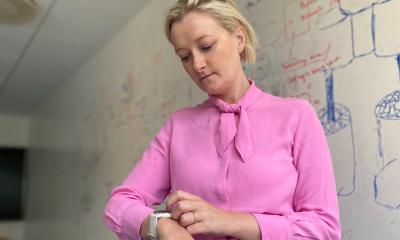In the early days of the Covid-19 pandemic, people afflicted with the long-term effects of the virus were left with more questions than answers. In an effort to better understand their conditions, many decided to turn to fitness watches. This unexpected use of wearables provided them with a wealth of data on their health status, allowing them to manage their disease more effectively by limiting strenuous activities and conserving energy.
Sarah Homewood, an educator in the Department of Computer Science, took a personal interest in this phenomenon. As someone who had experienced a long spell of Covid-19, she used a fitness tracker for self-monitoring her health. According to her findings, self-monitoring with a fitness tracker could provide patients with a sense of control and certainty about their diseases. This data-driven approach allowed patients to document their symptoms better and discuss them more effectively with their doctors. However, Homewood also points out that it could lead to anxiety in some due to the constant alerts from these wearable devices.
Fitness watches and trackers, which were initially designed for tracking physical activities and promoting health, are now being used to manage illness. Sarah experimented with this notion, using the tracker not just track her exercise and physical activity, but to manage her energy expenditure amid an ongoing illness.
Her research revealed both positive and negative aspects of self-monitoring. On the one hand, users reported having a greater sense of control over their condition and felt they could better document their symptoms. On the other hand, the constant self-monitoring also led to instances of unease and anxiety. For instance, one participant stopped her relaxing visits to a float tank after her fitness tracker reported elevated stress levels post-visit.
Furthermore, this fitness data can have significant implications on how individuals perceive and react to situations. It has the power to influence users’ decision-making process by introducing an element of certainty or uncertainty. For instance, Homewood altered her physical activities based on her heart rate readings, showing she could evade the consequences of overexertion by smart use of the watch.
The study supports previous findings of a similar nature and adds a new dimension to the subject of wearables being used as health trackers. Many have found these devices helpful, providing them with a degree of control. However, other users have faced rejection from their doctors based on the data these fitness watches provided. This has led to mixed reactions and raised questions about the acceptance of such technology in the environment of professional healthcare.
Homewood asserts that this self-monitoring technology is an important advancement that is here to stay. She highlights the need for healthcare professionals to open up to this technology and leverage the opportunities it presents. In doing so, they can help it to evolve further. She emphasizes that while early versions of these fitness trackers had certain limitations, the continuous collection of data over extended periods allows for trends to develop, which could be pivotal in tracking a patient’s health.
Currently, Homewood is liaising with several companies looking at developing software tailored for diseases. She feels that it’s crucial for people with illnesses not to be measured by standards meant for physically fit individuals. The researcher is also working to establish a dashboard interface that can bridge the gap between self-monitoring patients and the healthcare professionals treating them. This interface, she believes, will improve communication about the wearable-derived data.




